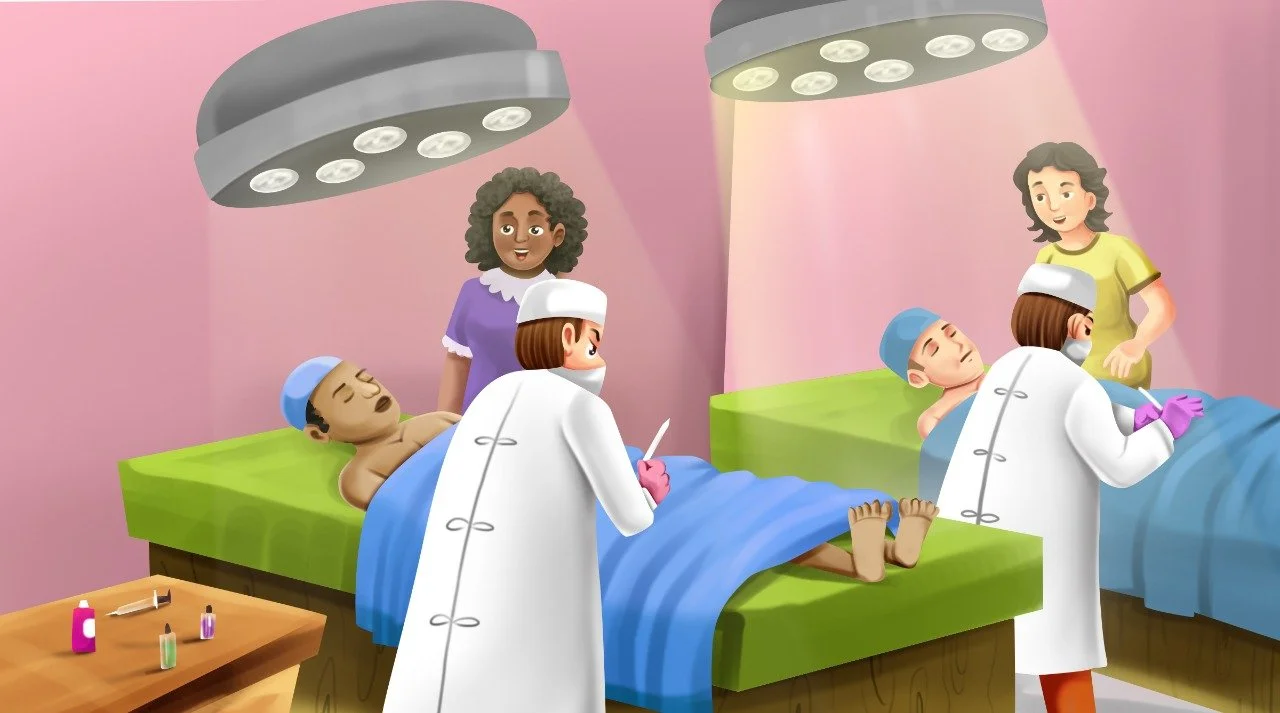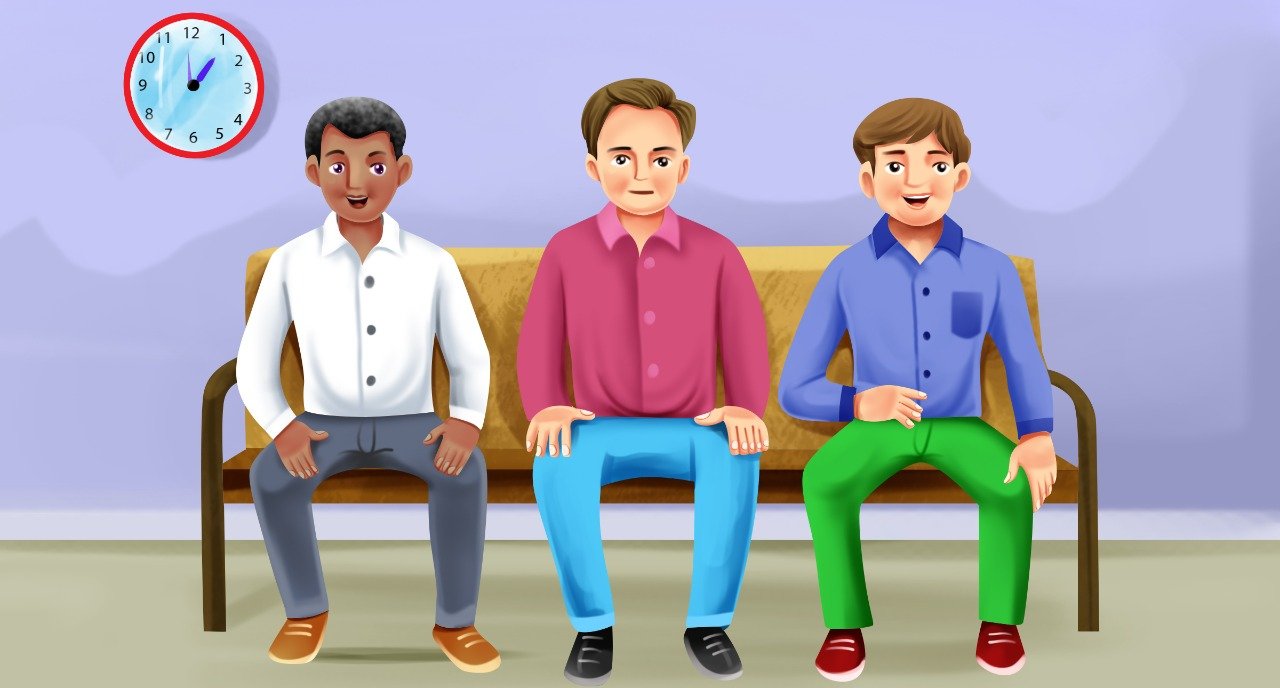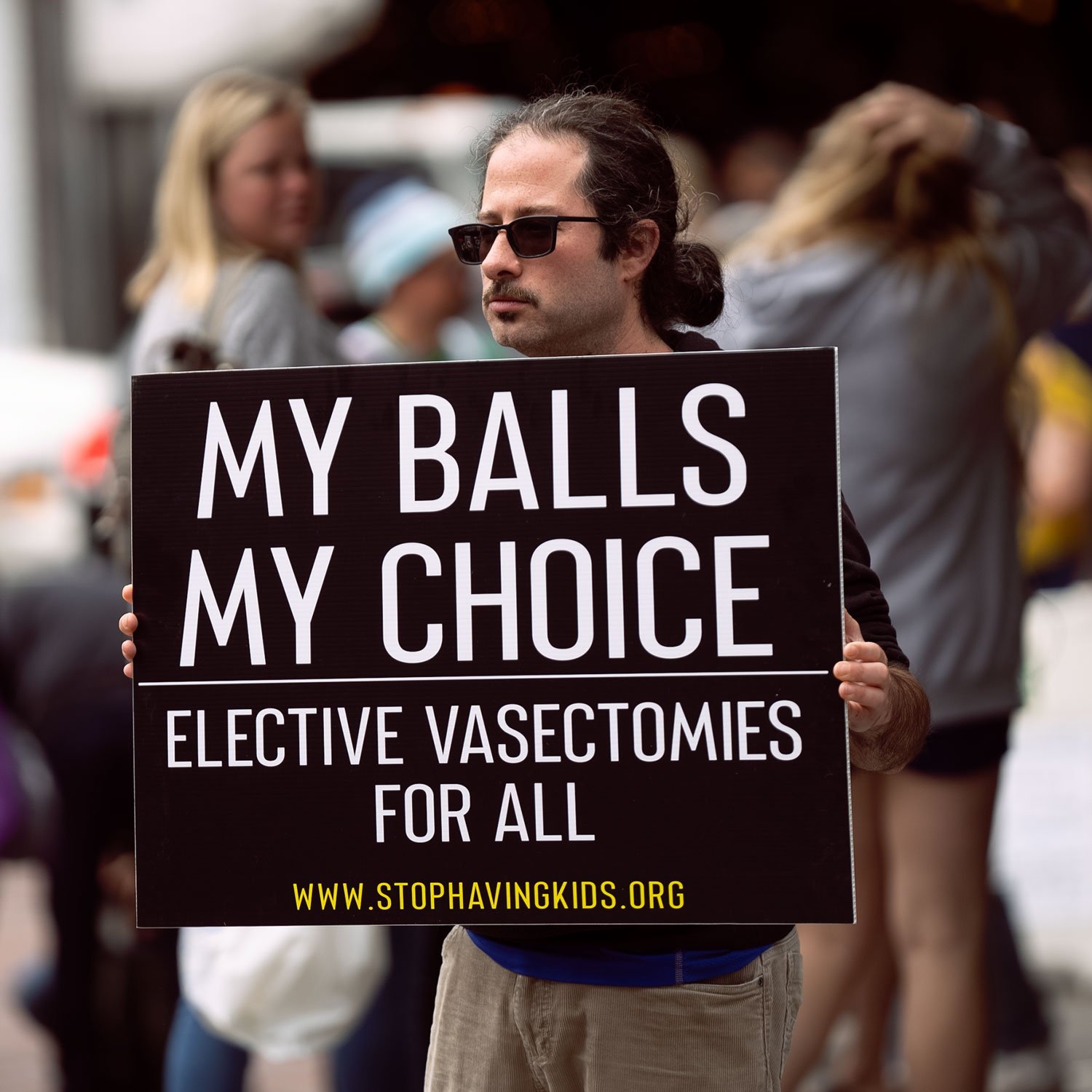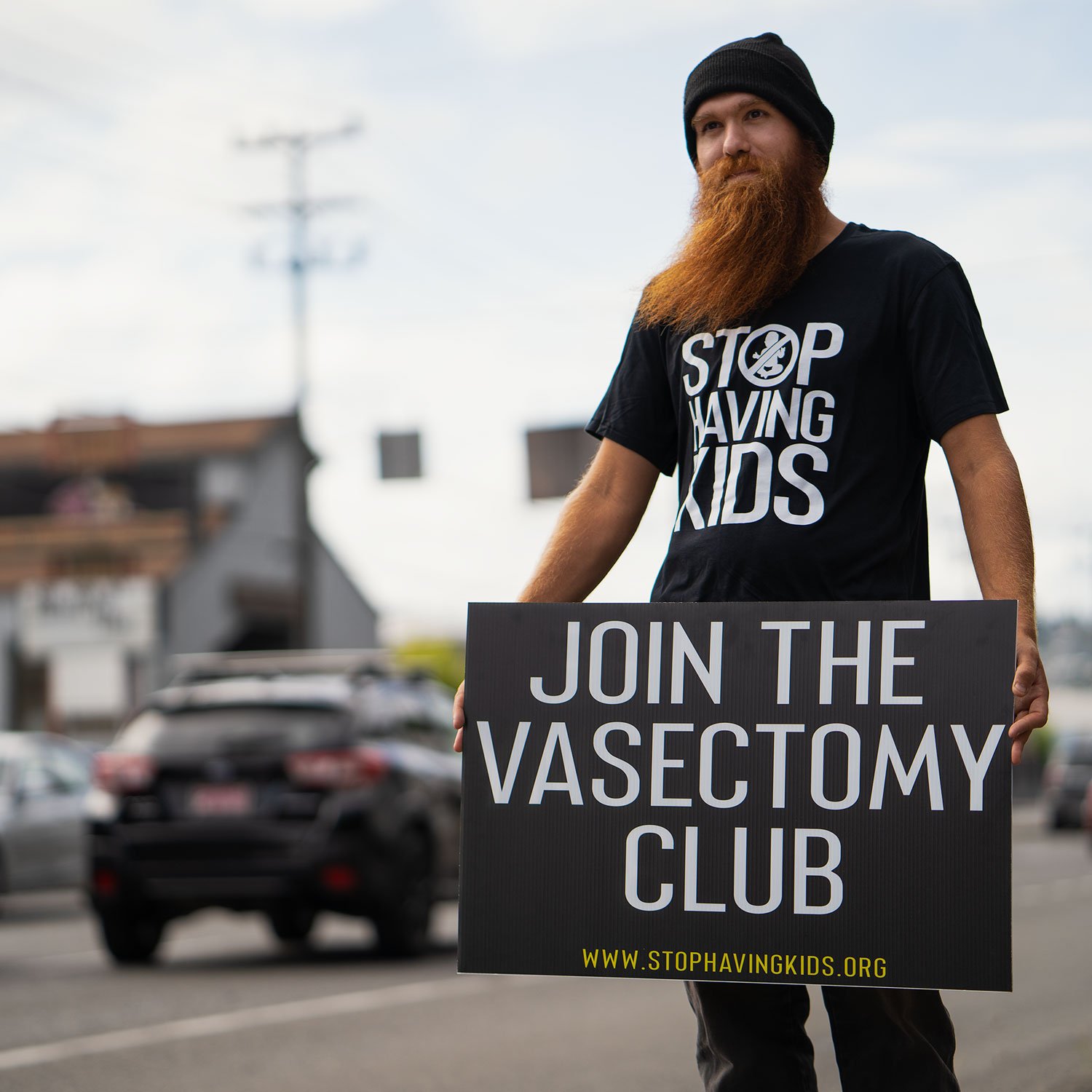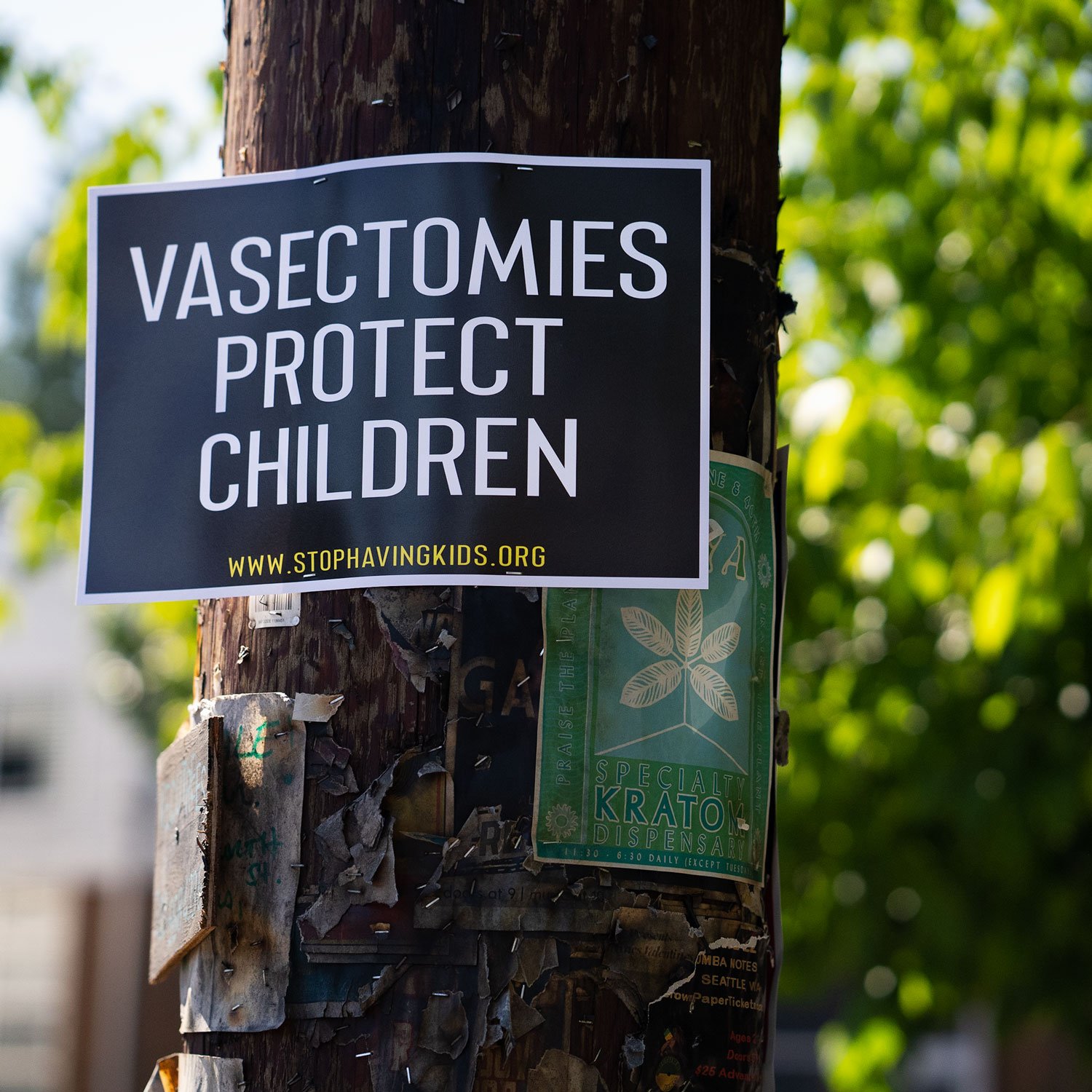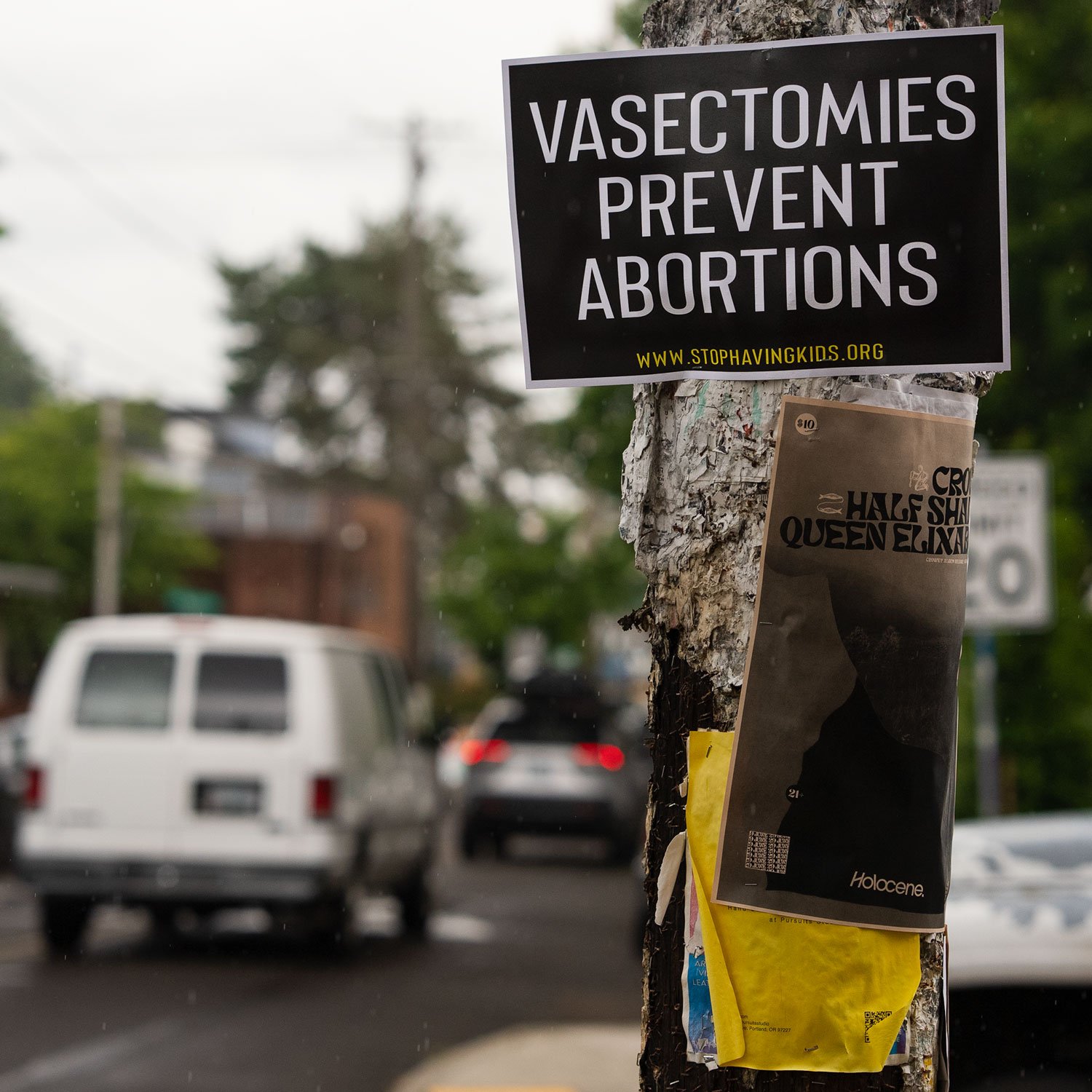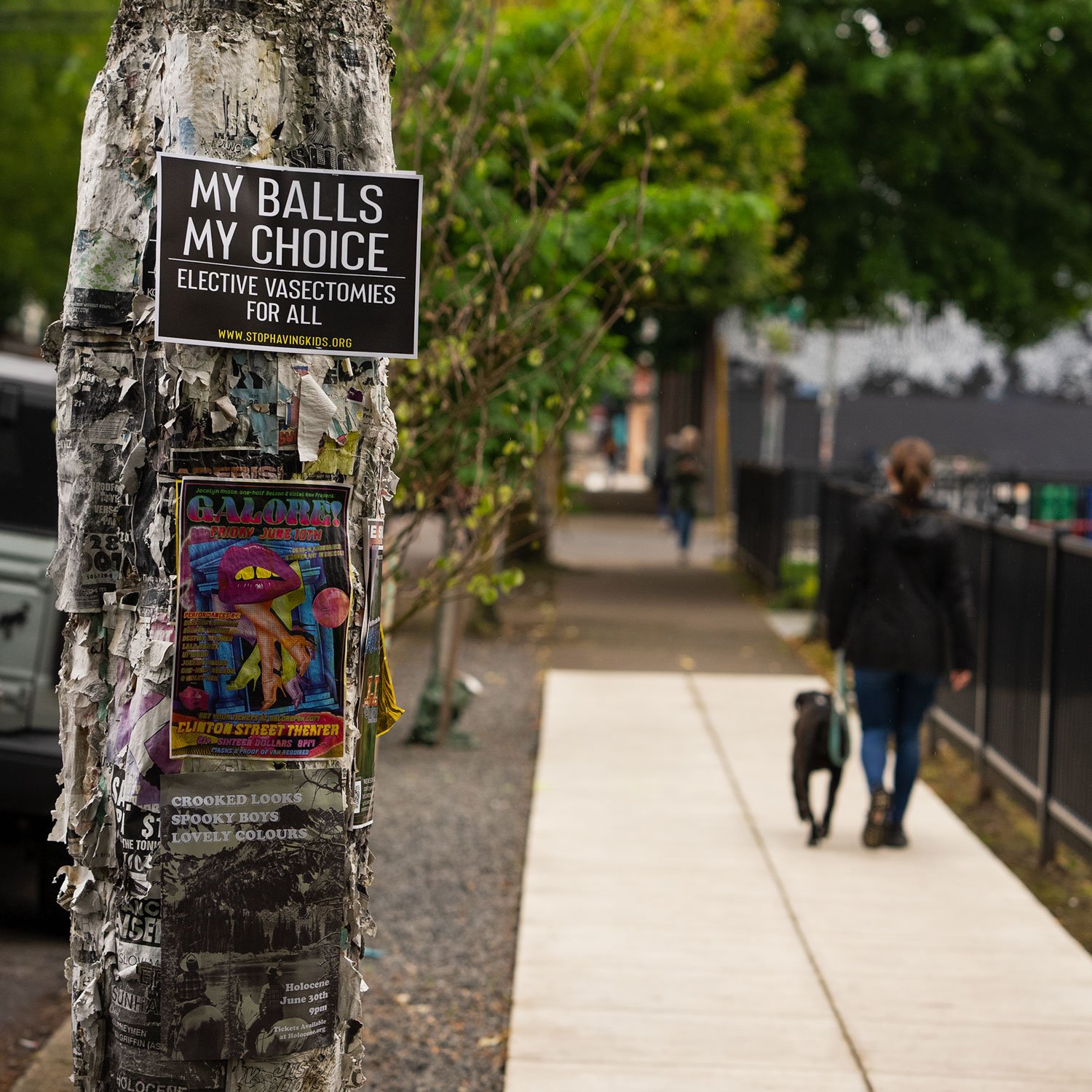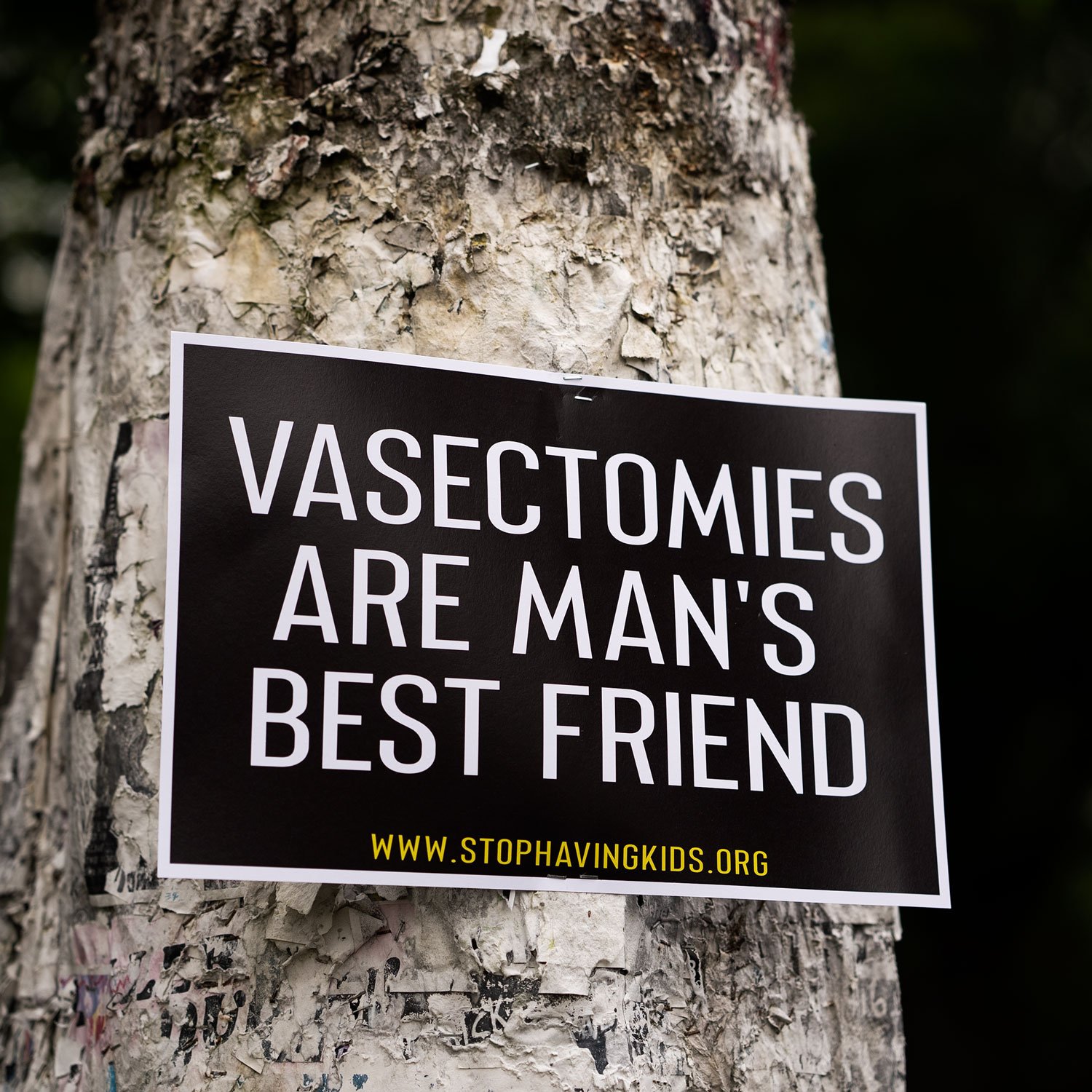
Why Opt For A Vasectomy?
Read More
If you are sure that you don't want to have any or more children, and you are still fertile and sexually active, you should make sure that you don't accidentally trigger a pregnancy. The best way to protect against accidents besides abstinence is sterilization.
The vasectomy, a champion of contraception, is a simple and dependable procedure that permanently blocks sperm from entering semen (the ejaculate that travels out of the penis and into the vagina). If the sperm can’t enter the vagina, then fertilization and subsequent pregnancy can’t occur. Since sperm is only about 2-5% of all semen volume, the rest is mostly composed of fluids from the prostate gland and the seminal vesicles, vasectomies do not stop ejaculation, merely the part of the ejaculate which causes pregnancy. 1
Vasectomies offer substantial protection against the tragedy of causing a pregnancy and can be performed in as little as 15 minutes. The operation is usually painless and small in scope, there’s typically a quick recovery process, and it’s generally considered to be safer and more effective than female sterilizations. 2
Quick Recovery
You Don't Lose Your Balls, Testosterone, or Semen
How Effective Are Vasectomies?
Read More
The vasectomy is currently one of the top most effective forms of birth control. It is still theoretically possible for a couple to face a pregnancy, but the probability of pregnancy after a vasectomy is extremely low.
No forms of contraception are guaranteed to prevent a pregnancy other than complete abstinence. All forms of contraception have a different success / failure rate at preventing pregnancy, which is sometimes the result of user error, such as when an incorrectly sized condom slips off or tears, or when someone performing the pull out method (withdrawal) doesn’t time the removal of the penis accurately. Other times a failure occurs that is not linked to user error, such as the extremely rare case when a vasectomy fails and sperm still makes its way into the vagina.
Fortunately the vasectomy happens to be an optimal way to safeguard against onsetting the creation of new life, with a stunning 99.85% success rate, or 0.15% failure rate for people within the first year of getting a vasectomy (1 to 2 out of 1000 couples will experience a pregnancy as result of a vasectomy failure). When it comes to preventing pregnancy and abortions from PIV (penis-in-vagina) sex, there’s no more responsible non-hormonal prevention method than a vasectomy. 3 4 5 6
Massively Superior Protection Against Triggering A Pregnancy Than Condoms or Withdrawal
Prevent Unintended Pregnancies & Abortions
Read More
To this day, nearly half of all pregnancies worldwide are unintended- and not solely due to irresponsible prevention methods. 7 8 Contraception offers an essential barrier to unintentional pregnancy, yet there are many existing barriers to contraception itself, including prohibition, false beliefs about pregnancy prevention, misinformation, stigma, affordability, and lack of accessibility. Some doctors refuse to perform sterilizations due to the patient’s age, marital status, lack of existing children, or other invasive and paternalistic reasons. Many people who understand how effective vasectomies are would do anything to get a vasectomy right now, but there isn’t equal access and opportunity to receive this one-time operation everywhere. With so many people living paycheck to paycheck, what’s often marketed as “affordable” for vasectomies is really only affordable for some, not all, who want this. SHK believes that governments should provide free access to vasectomies for anyone who wants one.
According to the United Nations Population Fund (UNFPA), nearly half of all pregnancies (121 million each year worldwide), are unintended. This also applies to the United States where in 2011, nearly half (2.8 million) of the 6.1 million pregnancies were unintended. With access to safe abortions becoming less protected by the US government, the number of unintended pregnancies is likely to continue to rise if access to vasectomies is not safeguarded.
To help prevent an unintended pregnancy, there are many options for contraception available, but the most effective contraceptive method today involves surgical sterilization (vasectomies for males and tubal ligations or bilateral salpingectomy for females). Compared to a tubal ligation, a vasectomy is a simpler, less invasive, more accessible, safer, and a more affordable operation.
Furthermore, if a pregnancy occurs, the pregnant person can take a morning-after pill or get an abortion (if their government allows it). If a male knows they do not want children, yet ejaculates without the fullest protection inside of a female, they will not be able to ensure that an abortion occurs should their partner become pregnant. Thus, upon deciding they do not want children, they should opt for a vasectomy to protect and safeguard their decision to be childfree. Finally, having a vasectomy ensures that the person won’t become victim to “sperm theft” or “baby trapping,” whereby a partner uses deception or theft to try to become impregnated by an unwilling and unsuspecting partner (e.g. taking semen from a condom or lying about taking birth control pills). 9
No More Causing Any Pregnancies
Do You Want Sex For The Rest Of Your Life To Be Purely For Pleasure?
Read More
Sex can be for pleasure or for procreation, but if your intention for the rest of your life is to have sex purely for pleasure then a vasectomy beats all other available methods of contraception. Post-vasectomy erections, ejaculations, and sex drive are usually indistinguishable from how they were pre-vasectomy. Sex can become more pleasurable for both partners when there’s no concern, anxiety, or fear over pregnancy. 10 An orgasm will still feel the same and look the same.
From a 2022 Slate article that asks the readers to “Stop leaving birth control up to women” 11
“He got a vasectomy a year after our second was born. It has made life easier. The sex has also been a lot more fun—not worrying about pregnancy makes you a lot more present. Overall, the vasectomy has given us a sense of freedom we didn’t have before.” -Erin Sagen
Make Birth Control More Gender Equitable
Boycott Human Procreation
Read More
The best way to safeguard against initiating the creation of new life (besides not having PIV sex) is by getting a vasectomy, which takes less than 30 minutes, and is painless enough that the patient can be operated on while awake with only a local anesthetic. All drugs, medicines, and operations can carry the risk of complications, but complications from vasectomies are very rare. The safest possible contraception plan between partners is for both to be sterilized, but tubal ligations and bilateral salpingectomies carry more severe risks and expenses than vasectomies.
A Voluntary Off Switch To Procreation
What To Do When You Decide To Get A Vasectomy
Read More
When you decide you want to get a vasectomy, look for a reputable doctor who can perform the operation. According to Dr. Charles W. Monteith, Medical Director of A Personal Choice: 12
A vasectomy is a primary care procedure and in many parts of the world, including the United States, general practitioners can perform vasectomies. Vasectomy operations aren’t limited to board certified urologists and vasectomy specialists, [which makes it easier to find a provider near you].
Sadly, there are some doctors who refuse to perform vasectomies or other sterilization procedures, often stemming from their personal religious or political beliefs. The doctors can be especially persistent in their opinions when the patient is young, childfree, or single. In order to find a doctor who will perform this operation, we recommend visiting the subreddit r/Childfree on Reddit, which maintains a list of childfree-friendly doctors, both in the United States and globally, who can perform vasectomies and other sterilizations without a hassle. 13
When deciding on which doctor to use, discuss with them the topic of eligibility for health insurance or government subsidies. A substantial portion of the cost of the vasectomy may be paid for by your health insurance or the government, depending on your area of residence.
How Is A Vasectomy Performed?
A vasectomy involves a local anesthesia before the quick operation begins.
Scalpel Technique:
According to The American College of Obstetricians and Gynecologists: 2
After a local anesthesia is injected into the skin to numb the scrotum and vas deferens, a scalpel is used to make one or two small openings in the skin of the scrotum. Each vas deferens is pulled through the opening until it forms a loop. A small section is cut out of the loop and removed. The two ends are tied and may be cauterized (sealed with heat). This causes scar tissue to grow and block the tubes. Each vas deferens then is placed back into the scrotum.
Scalpel-Free Technique:
According to Urologists.org: 14
A special tool (injector) is used to spray a high-pressure stream of anesthetic through the skin of the scrotum. This numbs both the vas deferens and surrounding tissues without the use of a needle. Instead of a scalpel, the doctor uses a specially designed sharp clamp to make a small hole (puncture) in the scrotum. The hole is gently stretched to enable the doctor to pull the vas deferens through the puncture hole, cut it, and seal off the ends with either sutures or by way of thermal-cautery.
The doctor also positions a layer of tissue surrounding the vas deferens so that it separates the two cut ends. This reduces the chance of the two ends growing back together. Because the puncture is so small (2 to 3 millimeters), it seals itself after the procedure, often by the next day. Antibiotic ointment is applied to the puncture hole, along with a gauze bandage.
The no-needle and no-scalpel vasectomy can be done in less than half an hour and it can be done as an outpatient procedure.
Vasectomy Operation Costs
According to Simplevas: 15
Vasectomies are a relatively low one-time expense, often covered by insurance companies or by federal grant money through state programs for low-income patents without insurance (check your benefits to see if you qualify). State regulated health insurance plans in eight states (IL, MD, NJ, NM, NY, OR, VT, WA) fully cover the cost of vasectomies.
If you have to pay out-of-pocket for the whole operation, the costs can range from about $600-$2000 USD.
Is A Vasectomy Painful?
Compared to most other operations, a vasectomy is quick and simple. Most vasectomy operations can be done using local anesthetic, and most patients report that the operation is not painful.
During the vasectomy procedure, there is a small amount of pain at the start when the anesthetic is injected. However, after the anesthetic is injected, the procedure is painless, besides some potential minor discomfort from pulling and tugging sensations. After a vasectomy, your scrotum may be sore but many patients are still able to drive themselves back home. Consider having someone around to help you out with transportation to play it safe.
If you are concerned about pain from a vasectomy operation, you may request a general anesthetic from the doctor. However, general anesthetic is not usually required for vasectomies.
Before A Vasectomy
Before a vasectomy, the doctor will usually request that you shower and shave your scrotum beforehand.
Although it can differ based on personal preference, one way to shave your scrotum is to do it in the shower. A shaver with multiple blades allows for a smoother shave. Also, shave when the surface of the scrotum is slightly moist. The slight moisture of the skin helps make shaving easier. As for technique, when shaving, start from the base of the penis and work your way down the scrotum.
After The Operation
After a vasectomy, there is likely to be some soreness and sensitivity. It’s common to experience bruising, pain, and swelling in the scrotum. For one’s comfort and the overall recovery process, it’s best to wear snug underwear that keeps your testes from hanging down for the first couple days after the surgery. Right after the vasectomy, it is recommended that you take it easy, do not engage in strenuous exercise or heavy lifting, and wait 1-2 weeks before having sexual intercourse again (which should be done with a secondary form of contraception, like a condom, for the first 2-4 months). You might want to use cooling packs or some frozen product to help minimize pain and swelling. Doctors usually advise taking Ibuprofen, Paracetamol, or Tylenol to help mitigate the pain. Over time, this soreness should wane. 16 17 18
Adverse effects post-vasectomy can include minor bleeding (blood in semen) and mild infections that can be treated with antibiotics. More severe infections can also occur, but those are very rare. Major complications are very uncommon, but possible. Some will experience testicular pain for a few months or longer. If you notice persistent side effects, discuss them with your doctor.
Vasectomies are not immediately effective as semen needs time to pass to be totally free of any remaining sperm. Until you’ve verified your sperm-free status, other forms of contraception are still recommended for 2-4 months. The doctor will usually ask for a sperm count test to be conducted within several months of the vasectomy to make sure the sperm are gone. Once the sperm count has dropped to zero, the doctor can advise on whether the person can be considered infertile. In very rare instances (about 1 in 500), the cut ends of the vas deferens can grow back together (recanalization), causing a sterilization failure. 19
One Time Expense Or Free
Vasectomy Myth Busting
Myth 1: A vasectomy is basically castration.
Vasectomies and castration are two completely different things. Castration involves an operation whereby a person’s testicles are either removed or deactivated. Given that the masculine hormone testosterone is produced in the testicles, castration significantly reduces the production of testosterone. For a vasectomy, the testicles and production of testosterone stay intact.
Normally sperm is produced in the testicles and travels up a tube called the vas deferens. When ejaculating into a vagina, sperm travels via the vas deferens to the urethra (a tube running through the penis) before being released into the vagina. A vasectomy simply involves blocking the movement of sperm from the testicles by cutting and blocking the vas deferens. The testicles stay intact, continue to function as normal, and produce both testosterone and sperm, just like pre-vasectomy days.
Myth 2: You don’t get an erection, orgasm, or ejaculate anymore.
A vasectomy doesn’t stop erections, the production of semen, or orgasms and the ejaculations that an orgasm provokes. The urethra (the tube running through the penis) transports not just sperm but also semen and urine. Given that a vasectomy blocks sperm from entering the urethra, only semen will make its way into the ejaculate. Given that sperm are microscopic, ejaculation after a vasectomy looks identical to the human eye.
Myth 3: You become less manly.
A vasectomy merely blocks sperm and does not alter the functioning of the testicles, so the body produces the same amount of testosterone after a vasectomy. A vasectomy is not the same as castration, which involves removal or deactivation of the testicles, in turn reducing testosterone production.
Myth 4: Sex is less pleasurable.
A vasectomy has no effect on sex drive, erections, or sexual performance. On the other hand, there is anecdotal evidence to suggest that many partners experience an improvement in sexual performance post-vasectomy, as they are no longer worried about unintended pregnancies. When people are anxious or concerned about a potential pregnancy occurring, it can decrease sexual performance and pleasure.
In rare cases someone’s sex life will be adversely affected by getting a vasectomy and it could even hurt to ejaculate, but this is uncommon.
Myth (partially) 5: A vasectomy is reversible.
Although it is technically possible for vasectomies to be reversed, these operations are expensive and don’t always work, and as such, vasectomies should generally be considered irreversible. The reversal operation is much more complex and invasive than the original operation and the chances of a successful reversal aren’t the most promising. Vasectomies are subsidized by the government in many countries, but vasectomy reversals are not.
Myth 6: So much sperm will build up that the testicles will explode.
Not to worry, nobody’s testes have ever exploded after receiving the snip. The body will continue to produce sperm well after a vasectomy, but the sperm won’t have anywhere to go. They’ll break down into smaller parts and will be reabsorbed back into the body.
No Need For Partner To Take Hormones
Perfect For Family Planning
Watch Our Vasectomy Video With Dr. Esgar Guarin
Sources and Additional Resources
The Editors of Encyclopaedia Britannica. (2019). Semen | biochemistry | Britannica. In Encyclopædia Britannica. https://www.britannica.com/science/semen
Sterilization for Women and Men. The American College of Obstetricians and Gynecologists. https://www.acog.org/womens-health/faqs/sterilization-for-women-and-men
Effectiveness of Birth Control Methods. The American College of Obstetricians and Gynecologists. https://www.acog.org/womens-health/infographics/effectiveness-of-birth-control-methods
Planned Parenthood. (2019). Birth control. Planned Parenthood. https://www.plannedparenthood.org/learn/birth-control
Planned Parenthood. (2019). Planned Parenthood. https://www.plannedparenthood.org/learn/birth-control/vasectomy
Contraceptive Effectiveness in the United States. (2020, January 23). Guttmacher Institute. https://www.guttmacher.org/fact-sheet/contraceptive-effectiveness-united-states
Nearly half of all pregnancies are unintended—a global crisis, says new UNFPA report. (2022, March 30). United Nations Population Fund. https://www.unfpa.org/press/nearly-half-all-pregnancies-are-unintended-global-crisis-says-new-unfpa-report
Bearak, J., Popinchalk, A., Ganatra, B., Moller, A.-B., Tunçalp, Ö., Beavin, C., Kwok, L., & Alkema, L. (2020). Unintended pregnancy and abortion by income, region, and the legal status of abortion: estimates from a comprehensive model for 1990–2019. The Lancet Global Health, 8(9). https://doi.org/10.1016/S2214-109X(20)30315-6
Beaty, Z. (2022, January 30). Baby Trapping: Do Women Really “Steal” Sperm? Www.refinery29.com. Retrieved June 22, 2022, from https://www.refinery29.com/en-gb/2022/01/10831906/baby-trapping-illegal
Hofmeyr, Doreen & Greeff, Abraham. (2002). The Influence of a Vasectomy on the Marital Relationship and Sexual Satisfaction of the Married Man. Journal of sex & marital therapy. 28. 339-51. 10.1080/00926230290001466.
Sagen, E. (2022, May 18). Men, It’s Time to Consider a Vasectomy. Slate Magazine. https://slate.com/technology/2022/05/vasectomy-roe-v-wade-men-testicles.html
Dr. Monteith expert in no-needle no-scalpel vasectomy. A Personal Choice. Retrieved June 22, 2022, from https://www.bestvasectomy.com/vasectomy/
Childfree Friendly Doctors List: https://www.reddit.com/r/childfree/wiki/doctors/
No-Needle, No-Scalpel Vasectomy. Urologists.org. https://www.urologists.org/article/treatments/no-needle-no-scalpel-vasectomy
Frequently Asked Questions for Vasectomy in Iowa | SimpleVas®. (n.d.). SimpleVas Vasectomy. https://www.simplevas.net/faqs/
NHS Choices. (2019). Your contraception guide. NHS. https://www.nhs.uk/conditions/contraception/vasectomy-male-sterilisation/
familydoctor.org editorial staff. (1996). Vasectomy: What to Expect - familydoctor.org. Familydoctor.org. https://familydoctor.org/vasectomy-what-to-expect/
Resources for Vasectomy in Des Moines, IA | SimpleVas Vasectomy Clinic. (n.d.). SimpleVas Vasectomy. Retrieved June 22, 2022, from https://www.simplevas.net/resources/
Pregnancy after a vasectomy: Can it happen? (2019, October 21). Www.medicalnewstoday.com. https://www.medicalnewstoday.com/articles/326737#failure-rates
Vasectomies Are Going Viral After the Roe v. Wade Leak. (2022, May 23). Time. https://time.com/6178287/vasectomy-sterilization-roe-v-wade/
Male Contraceptive Initiative: https://www.malecontraceptive.org/
































